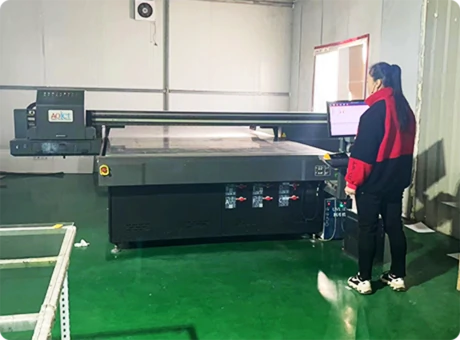Understanding the Cost of Architectural Glass Factors, Types, and Considerations
Architectural glass plays a pivotal role in modern building design, serving both functional and aesthetic purposes. Whether used in windows, facades, or interior partitions, glass contributes significantly to a structure's overall visual appeal and energy efficiency. However, one of the most critical elements to consider during any construction or renovation project is cost. Understanding the factors that influence the pricing of architectural glass is essential for making informed decisions that align with both budget constraints and design aspirations.
Factors Influencing the Cost of Architectural Glass
1. Type of Glass Architectural glass is not a one-size-fits-all material. Various types include tempered glass, laminated glass, insulated glass, and low-emissivity (low-E) glass, among others. Each type has its own manufacturing processes, properties, and applications, which significantly affect its cost. For example, laminated glass, which consists of two or more layers bonded with a polymer interlayer, is generally more expensive due to its enhanced safety and sound insulation properties.
2. Thickness and Size The thickness and size of the glass panels also contribute to the overall cost. Larger and thicker glass panes require more raw materials and may necessitate specialized handling and installation techniques, thereby increasing labor costs. Custom-sized glass can also drive up costs as it often requires unique production processes.
3. Finishes and Treatments Architectural glass can undergo various treatments to enhance its functionality and appearance. Coatings for UV protection, anti-reflective finishes, or decorative patterns can add to the cost. Furthermore, specialized finishes such as fritted glass or etched glass are also more expensive due to the additional processing involved.
4. Energy Efficiency The drive towards sustainable building practices has led to the increasing use of energy-efficient glass options. Low-E glass, which reflects infrared light and reduces heat transfer, can significantly reduce energy costs in buildings. While the initial investment may be higher than standard glass, the long-term savings on energy bills can make it a cost-effective choice.
architectural glass cost
5. Installation Costs Beyond the material costs, installation plays a substantial role in the overall budget. Architectural glass can be heavy and requires specialized handling equipment and techniques. Complex installations, such as those involving curved or uniquely shaped glass, can further increase labor costs. It is essential to factor in these variables when estimating the total cost of architectural glass in a project.
6. Market Trends and Location The cost of architectural glass is also influenced by market dynamics such as supply and demand, regional economic conditions, and local regulations. Prices may vary significantly from one location to another, driven by factors like transportation costs, availability of skilled labor, and local construction standards.
Budgeting for Architectural Glass
When planning a budget for architectural glass, it is crucial to consider not just the upfront costs, but also the long-term benefits. Factors such as energy efficiency, durability, and maintenance costs can affect the overall financial impact of using specific types of glass. Engaging with experienced architects or consultants during the design phase can help in identifying the most cost-effective options tailored to the specific needs of the project.
Conclusion
Architectural glass is a vital component of modern architecture, offering both functional benefits and aesthetic appeal. Understanding the various factors that influence its cost—type, size, finishes, energy efficiency, installation, and market conditions—is essential for making informed decisions. By carefully considering these elements, builders, architects, and homeowners can select the right architectural glass for their projects, ensuring both financial viability and design excellence that lasts.
In conclusion, while the initial cost of architectural glass may vary widely, its potential benefits in terms of energy savings, aesthetic value, and occupant comfort can make it a worthwhile investment in any construction project. It pays to do thorough research and planning to find the best glass solutions that meet both budgetary requirements and design goals, ensuring a successful and sustainable architectural outcome.
 Afrikaans
Afrikaans  Albanian
Albanian  Amharic
Amharic  Arabic
Arabic  Armenian
Armenian  Azerbaijani
Azerbaijani  Basque
Basque  Belarusian
Belarusian  Bengali
Bengali  Bosnian
Bosnian  Bulgarian
Bulgarian  Catalan
Catalan  Cebuano
Cebuano  Corsican
Corsican  Croatian
Croatian  Czech
Czech  Danish
Danish  Dutch
Dutch  English
English  Esperanto
Esperanto  Estonian
Estonian  Finnish
Finnish  French
French  Frisian
Frisian  Galician
Galician  Georgian
Georgian  German
German  Greek
Greek  Gujarati
Gujarati  Haitian Creole
Haitian Creole  hausa
hausa  hawaiian
hawaiian  Hebrew
Hebrew  Hindi
Hindi  Miao
Miao  Hungarian
Hungarian  Icelandic
Icelandic  igbo
igbo  Indonesian
Indonesian  irish
irish  Italian
Italian  Japanese
Japanese  Javanese
Javanese  Kannada
Kannada  kazakh
kazakh  Khmer
Khmer  Rwandese
Rwandese  Korean
Korean  Kurdish
Kurdish  Kyrgyz
Kyrgyz  Lao
Lao  Latin
Latin  Latvian
Latvian  Lithuanian
Lithuanian  Luxembourgish
Luxembourgish  Macedonian
Macedonian  Malgashi
Malgashi  Malay
Malay  Malayalam
Malayalam  Maltese
Maltese  Maori
Maori  Marathi
Marathi  Mongolian
Mongolian  Myanmar
Myanmar  Nepali
Nepali  Norwegian
Norwegian  Norwegian
Norwegian  Occitan
Occitan  Pashto
Pashto  Persian
Persian  Polish
Polish  Portuguese
Portuguese  Punjabi
Punjabi  Romanian
Romanian  Russian
Russian  Samoan
Samoan  Scottish Gaelic
Scottish Gaelic  Serbian
Serbian  Sesotho
Sesotho  Shona
Shona  Sindhi
Sindhi  Sinhala
Sinhala  Slovak
Slovak  Slovenian
Slovenian  Somali
Somali  Spanish
Spanish  Sundanese
Sundanese  Swahili
Swahili  Swedish
Swedish  Tagalog
Tagalog  Tajik
Tajik  Tamil
Tamil  Tatar
Tatar  Telugu
Telugu  Thai
Thai  Turkish
Turkish  Turkmen
Turkmen  Ukrainian
Ukrainian  Urdu
Urdu  Uighur
Uighur  Uzbek
Uzbek  Vietnamese
Vietnamese  Welsh
Welsh  Bantu
Bantu  Yiddish
Yiddish  Yoruba
Yoruba  Zulu
Zulu 

